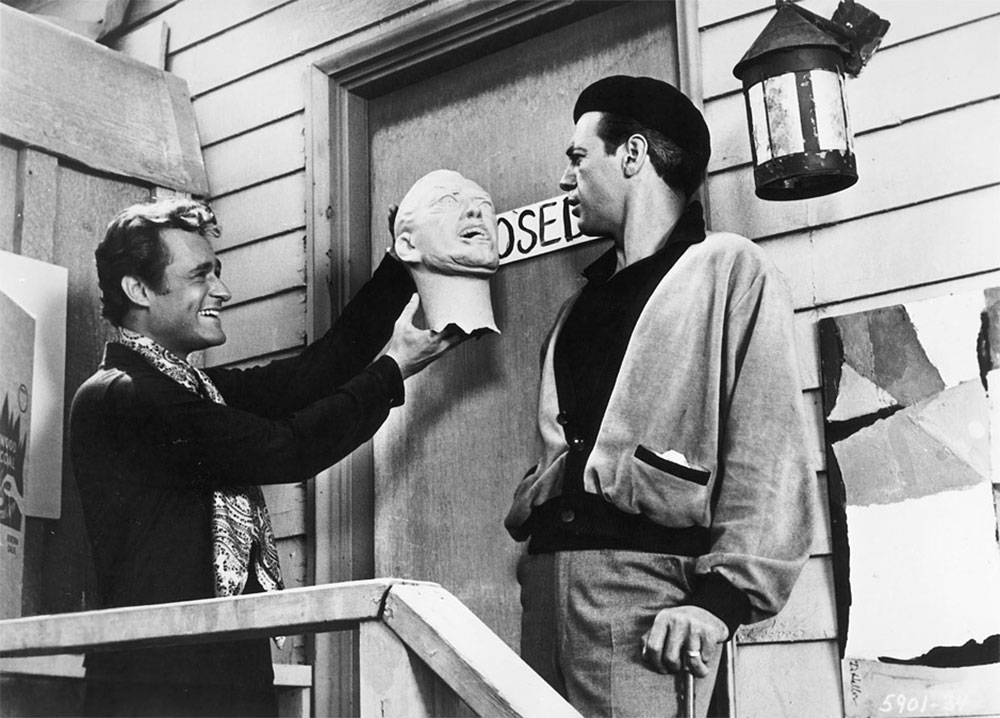Roger Corman—wizard of revenue, king of the drive-in—churned shoestring schlock into dependable profits on American International’s slim budgets. But in 1959, he reached a new stage in his career as a master ironist with the horror-comedy A Bucket of Blood, his twenty-third feature despite only being a director for four years. The film was scripted in five days and shot over another five for a paltry $50K. According to screenwriter Charles B. Griffith, Corman was unsure how to direct the film’s comedy until Griffith told him to play everything straight.
The movie repurposes Michael Curtiz’s Mystery of the Wax Museum (1933) into a beatnikploitation satire, unraveling in a counterculture coffeehouse where arsenals of artists dress in cardigans, ascots, berets, and U.S. cavalry insignia caps. It begins with a tight close-up of a poet mid-recitation, accompanied by Fred Katz’s cool jazz score. With an overgrown beard and no ounce of irony, the man declares, “Life is an obscure hobo bumming a ride on the omnibus of art.” The roomful of fellow artists accept his messianic schtick, but nobody’s more convinced than Walter Paisley (Dick Miller), a boyish, hunched-over busboy who watches with starry-eyed adoration. Walter is a would-be artist but, in his hands, clay never molds into anything beyond an amorphous glob. All of that changes one night after he mistakenly murders his maternalistic landlady’s cat, casts its cadaver in clay, and parades the sculpture around as an original creation. His piece is heralded as a maestro’s masterstroke by the crowd of coffeehouse hotshots, spiraling him into an increasingly sadistic artistic practice, always in the name of Art.
Historically, Corman’s commerce has always overshadowed his artistry. But with A Bucket of Blood, Corman’s compositional eye compensates for his financial constraints. His rendering of interiors is a dynamic of light and movement. During Walter’s first murder, Corman shoots with canted angles, his camera stumbling around like a drunkard as a single overhead light swivels back-and-forth, dispatching an oscillation of light and shadow. Played with the pathos of a downtrodden dreamer, Walter is both murderer and artistic fraudster—equally egregious misdeeds in the beatnik scene. Yet there’s a humble sincerity to his craft: an unwavering desire to make art at all costs. Walter evokes a B-movie ethos, where under-equipped outsiders make art from flesh and blood, letting nothing as inconsequential as a budget stand in the way of their creations.
A Bucket of Blood screens this evening, October 31, at Hauser & Wirth as part of the series “CINÉ PLUTO Presents A Bucket of Blood and Spooky Shorts.”



